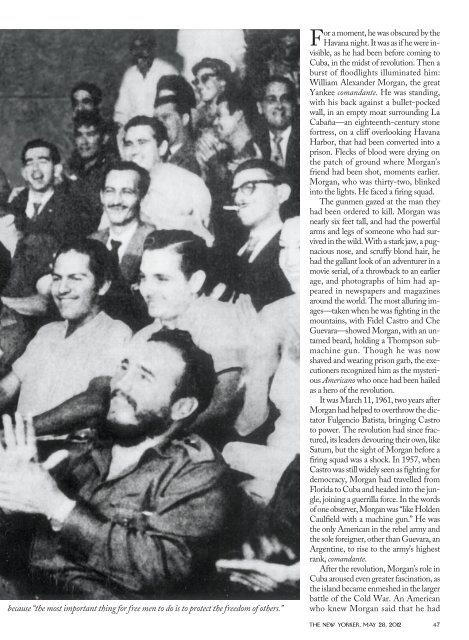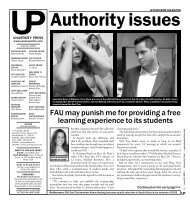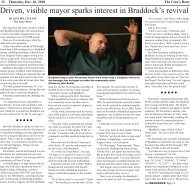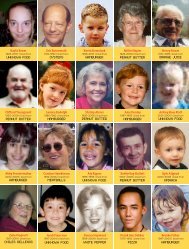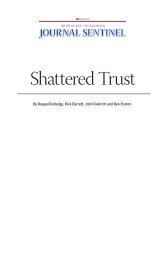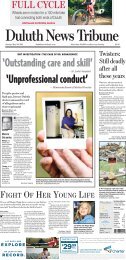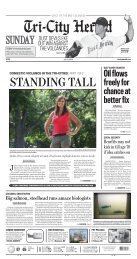THE YANKEE COMANDANTE
THE YANKEE COMANDANTE
THE YANKEE COMANDANTE
You also want an ePaper? Increase the reach of your titles
YUMPU automatically turns print PDFs into web optimized ePapers that Google loves.
ecause “the most important thing for free men to do is to protect the freedom of others.”<br />
For a moment, he was obscured by the<br />
Havana night. It was as if he were invisible,<br />
as he had been before coming to<br />
Cuba, in the midst of revolution. Then a<br />
burst of floodlights illuminated him:<br />
William Alexander Morgan, the great<br />
Yankee comandante. He was standing,<br />
with his back against a bullet-pocked<br />
wall, in an empty moat surrounding La<br />
Cabaña—an eighteenth-century stone<br />
fortress, on a cliff overlooking Havana<br />
Harbor, that had been converted into a<br />
prison. Flecks of blood were drying on<br />
the patch of ground where Morgan’s<br />
friend had been shot, moments earlier.<br />
Morgan, who was thirty-two, blinked<br />
into the lights. He faced a firing squad.<br />
The gunmen gazed at the man they<br />
had been ordered to kill. Morgan was<br />
nearly six feet tall, and had the powerful<br />
arms and legs of someone who had survived<br />
in the wild. With a stark jaw, a pugnacious<br />
nose, and scruffy blond hair, he<br />
had the gallant look of an adventurer in a<br />
movie serial, of a throwback to an earlier<br />
age, and photographs of him had appeared<br />
in newspapers and magazines<br />
around the world. The most alluring images—taken<br />
when he was fighting in the<br />
mountains, with Fidel Castro and Che<br />
Guevara—showed Morgan, with an untamed<br />
beard, holding a Thompson submachine<br />
gun. Though he was now<br />
shaved and wearing prison garb, the executioners<br />
recognized him as the mysterious<br />
Americano who once had been hailed<br />
as a hero of the revolution.<br />
It was March 11, 1961, two years after<br />
Morgan had helped to overthrow the dictator<br />
Fulgencio Batista, bringing Castro<br />
to power. The revolution had since fractured,<br />
its leaders devouring their own, like<br />
Saturn, but the sight of Morgan before a<br />
firing squad was a shock. In 1957, when<br />
Castro was still widely seen as fighting for<br />
democracy, Morgan had travelled from<br />
Florida to Cuba and headed into the jungle,<br />
joining a guerrilla force. In the words<br />
of one observer, Morgan was “like Holden<br />
Caulfield with a machine gun.” He was<br />
the only American in the rebel army and<br />
the sole foreigner, other than Guevara, an<br />
Argentine, to rise to the army’s highest<br />
rank, comandante.<br />
After the revolution, Morgan’s role in<br />
Cuba aroused even greater fascination, as<br />
the island became enmeshed in the larger<br />
battle of the Cold War. An American<br />
who knew Morgan said that he had<br />
<strong>THE</strong> NEW YORKER, MAY 28, 2012 47


